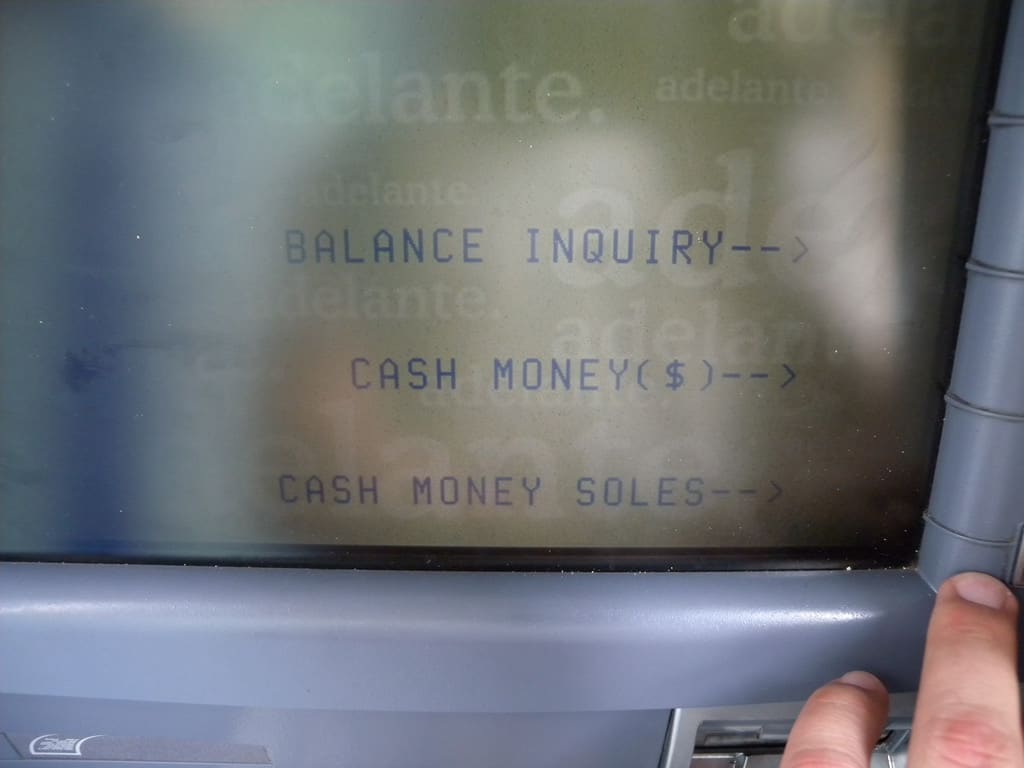I love local newspapers. There’s just something you can learn about a place from a local newspaper that no wandering or even research will tell you.
But it’s the advertisements that often are the most interesting.
I was recently in Vancouver, Canada, and while I was there I picked up a “24 hrs” newspaper, which is one of those read-the-whole-thing-on-the-way-to-work free papers.
Inside, amidst all the local coverage, was a full page ad for a store called, with interesting and redundant flair, “CashMoney”.
I had seen these stores around town, but hadn’t known what they were. But upon reading the ad, I recognized at once that it was a payday lender.
They were advertising a deal. Shall we read the ad together? Let’s.
Table of Contents
The ad
Here’s the ad:

First of all, remember the operative phrase: “if they are advertising it, you don’t need it“. Now, “need” is a subjective term, and that’s especially true for fringe financial services, where the whole point is that you have no other option.
But in many cases you do. NerdWallet has a list of payday loan alternatives and so does The Simple Dollar. You can find short term loans that have interest rates than are much lower than payday lenders. They just might not be advertising them. (Cough cough.)
The deal
The big sell here is a $300 loan for $20. As we all know, the process is that said borrower will write a post-dated check for $320. (There may be a more updated way of doing this, as evidenced from the texting solution on the left side, but the end result is the same.) In response, the lender will give the borrower $300 cash (or equivalent) on the spot. On a day in the future, the lender will cash the $320 check, and the transaction will be complete.
(Assuming that you have the $320, but that’s a different story.)
Let’s admit a certain intuitive illogic: $20 doesn’t sound so bad against $300. I mean, it’s only 6%, and a single digit percentage doesn’t typically get people off the couch to go to a sale, does it?
But what if I said that the percentage isn’t 6%, but 174%? Would that feel a bit different? Because that’s the number you’re actually paying.
The calculation
How did I get that figure? Well, the APR (annual percentage rate) is the rate of the loan over a year’s time.
So, if you borrow $300 and have to pay $20, that’s a rate of $20 ÷ $300 = 0.0667, about 7 cents for every dollar borrowed.
Now, there are 365 days in a year, and the term, in this case, is 14 days.
So to calculate the APR, you need to multiply the borrowing rate by the number of days in the year, and then divide by the term of the loan. So:
0.0667 × 365 ÷ 14 = 1.74 = 174%
So the APR for the loan is 174%.
For comparison, even the highest of typical credit cards top out at 23%, according to Value Penguin. This rate is more than seven times that.
That’s the brilliance of this type of product. It costs 174%, but it feels like 6%.
The fine print
And lest you worry that my math is off, the advertisement’s fine print agrees with me:
“Under this offer for a $300 payday loan for 14 days the cost of borrowing is $6.67 for each $100 advanced, with a total payback amount of $320 and an APR of 173.81%”

But wait, don’t forget that this is a promotional price. The ad states that this is available “on first loan only”.
The fine print goes into more detail, stating that the regular fee isn’t $20, but $51, for an eye-popping 443.21% APR. Wow.
And this is assuming there are no other fees, which isn’t such a good assumption.
The point
You want to avoid the trap of payday lenders. And the best way to do that is to get your finances in order. Do what we talk about here. Make a plan and stick to it. Learn the secret life of your money. Build up an emergency fund. Stop taking on debt.
It might take some time, but you can build yourself up, such that you hopefully never need to set foot in CashMoney.


